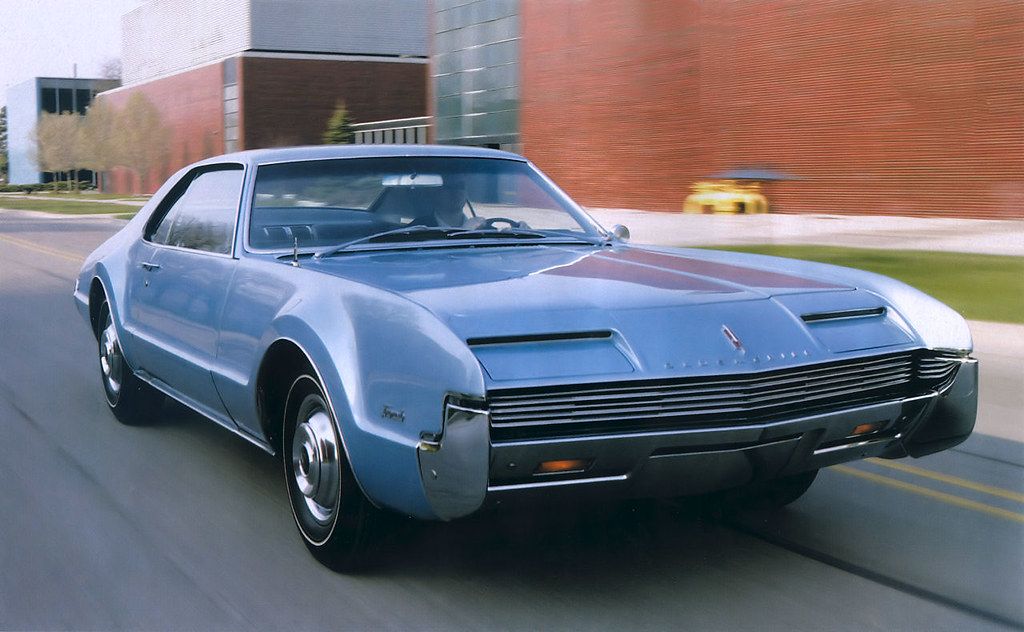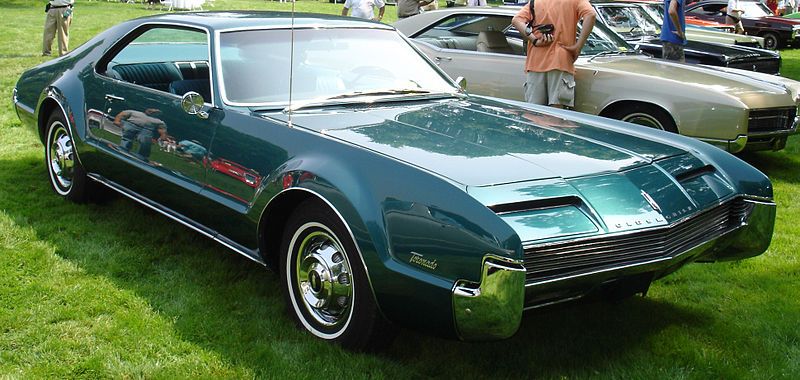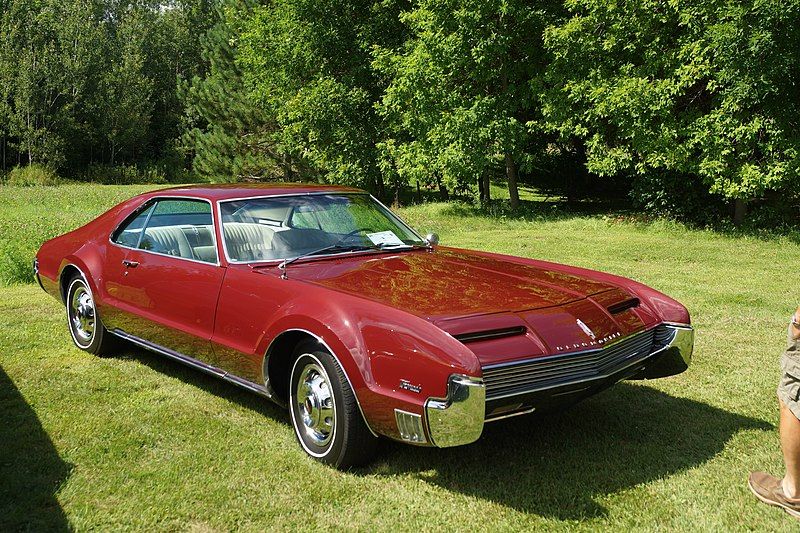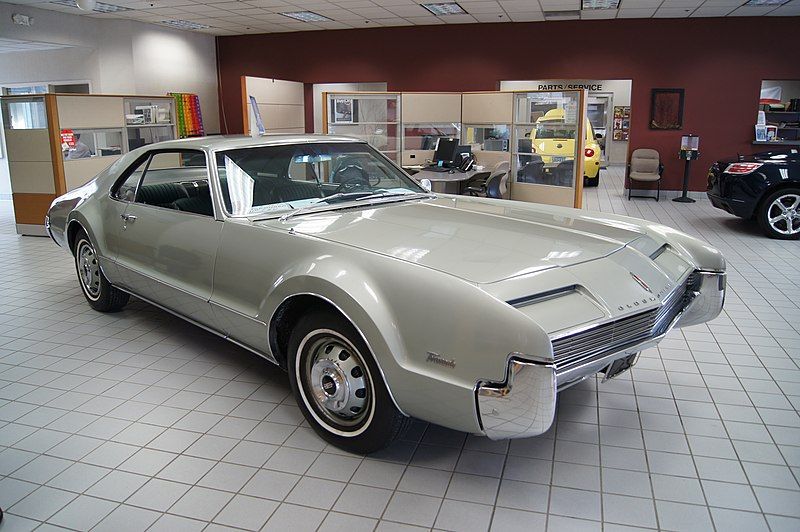Oldsmobile's Toronado was the brand's entry into the segment of the market dominated by the Buick Riviera and Ford Thunderbird, the personal luxury sports car. The design for the Toronado was originally intended to be on a much smaller car using the A platform, but it ended up on General Motor's large E platform. A far cry from the original concept called the "Flame red car."
Jay Leno spoke to the car's designer, David North. The designer identifies a plethora of ways that the Toronado tried to make itself more distinct from its stablemates. It employed an innovative drivetrain that hadn't sold in the United States for three decades whilst trying to step away from as North describes it the "box on box" design language of its contemporary.
The designer claims that the engineers could run wild with the Toronado because design committees had kept at a distance. After all, the model seemed unlikely to make production with its ambition to break so man conventions. When the vehicle made it to the production line, the automotive press effectively “blackballed” this first generation, with them alleging it had poor brakes.
The Toronado is a well-designed Muscle Car lost in a sea of memorable designs.
Innovative Design
Typically, personal luxury cars were and still are rear-wheel drive and front-engined, the perfect combination for engaging tail-happy driving. The Toronado stands apart from this. It used what gets refered to as the Unitized Power Package. Simply explained, this put a large V8 over the front axle along with the transmission. This engine then sends its power to the front wheels, making it the first Front-wheel drive car available in the US domestic market since the 1930s. To a modern audience, a V8 engine driving the front wheels seems impossible, with modern V8s producing more than 500 horsepower and front-wheel drive becomes unviable around the 220 horsepower mark.
The 7.0-liter Rocket V8 produces 385 horsepower, which makes for an interesting driving experience. To solve this problem, Firestone, a tire manufacturer, built this car a unique tire. The special tire was even more important by the time the vehicle exited production due to the engine swelling to a 455 7.5 liter. This is then mated to the Turbo Hydromatic 425 3-speed transmission. The polar opposite of this car, the Chevrolet Corvair with its rear-engine, rear-wheel-driven driveline got declared Unsafe at any Speed a year before the Toronado's launch in 1965.
As a result, the Toronado was enough of a sales success, existing alongside its E platform sharing, rear-wheel-drive vehicles until 1992. This success hasn't converted to long-term success, with the Ford Thunderbird remaining the icon of this segment due to its more engaging setup. For those who don't like the sound of the Toronado, it is possible to modify it to a rear-wheel-drive, as Jay Leno's car proved.
A Decent Performer
Fortunately for the Toronado one of the most important metrics for the Muscle Car is its straight-line speed. This means that steering, and delivering power to the road through the front wheels, doesn't take away from the Toronado in the same way that it would a hot hatchback. The Toronado performs well, hitting 60 miles per hour in 7.7 seconds and finishing the quarter-mile in 15.6 seconds. In the sprint to 60, it was faster by more than a second than the same model year of Thunderbird due to a powerful advantage.
Not only does the Toronado come out on top in sheer performance, it also has a unique design. The model maintained the concept car's perfectly sized proportions on its larger than intended body. Stepping itself apart from the other luxury vehicles of the time, the Toronado came with pop-up headlights, at times they've failed mechanically but aren't the most expensive part of the vehicle. The benefits of pop-up headlights surely outweigh this possible drawback.
An Absolute Bargain
The Toronado is well-built, although the engines can run a little hot under the hood, unlike the Dodge Charger the bonnet doesn't feature any large vents, instead, it maintains a remarkably sleek look. According to Hagerty, the Toronado came in two trim levels, basic Toronado and Deluxe, which Haggerty claim is the most common specification for the model. All cars came with power steering, power brakes, and heavy carpeting. The more expensive option upped the luxury ante a little further with a rear speaker and the option of modern niceties like air conditioning.
No expense got spared in the car's interior, with wooden dashboard inlays that are appropriate in this era of luxury vehicles. The car's driver controls are in style familiar style to muscle car enthusiasts. The dials are high quality, made from metal, and in most used examples appear to have aged well, unlikely cheaper models like the Torino. Haggerty references contemporary journalists calling the vehicle the most comfortable car to date. Classic, a website that monitors and collects auctions of classic cars, has found that the first generation Toronado has sold for an average of $20,088. Less desirable examples have sold for beneath $10,000 and on the opposite end of the outliers, very few examples have sold for anything higher than $40,000.




